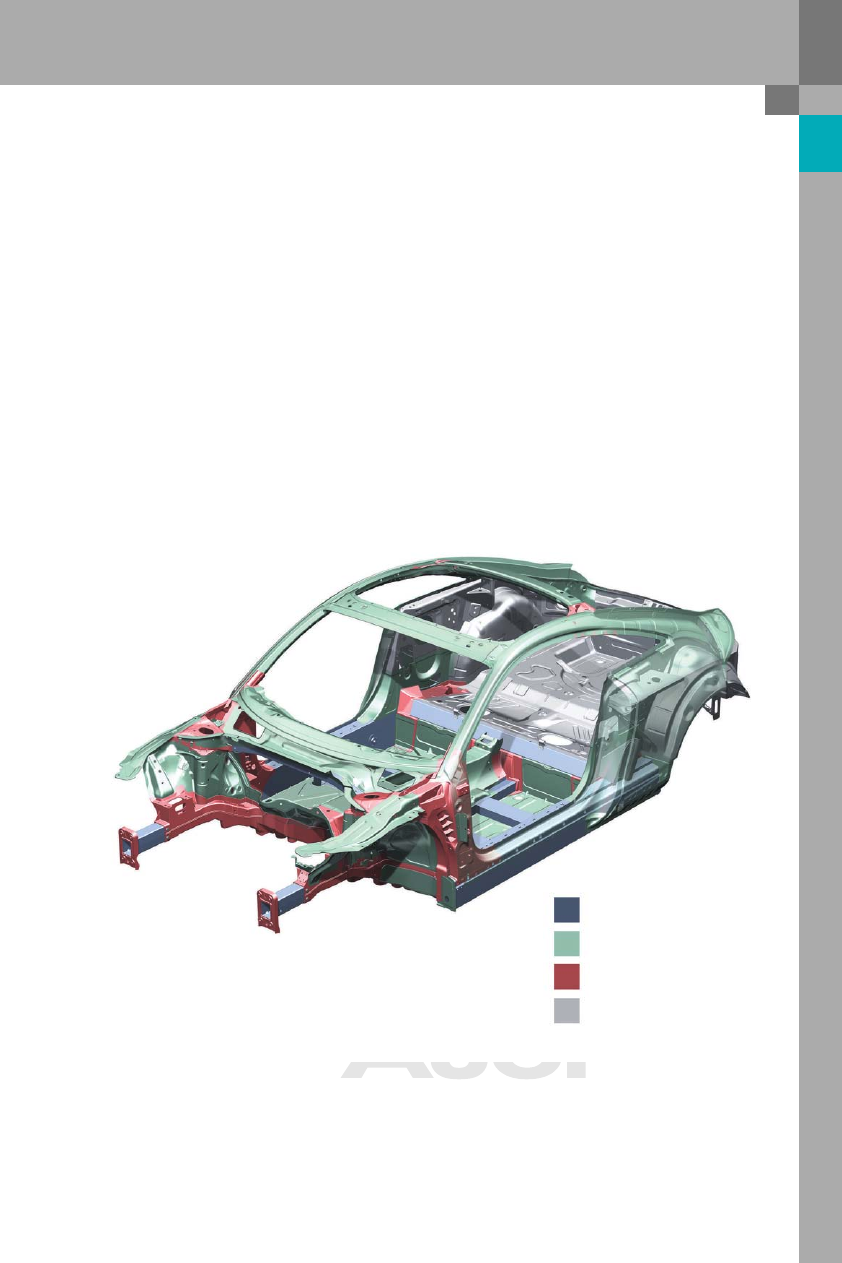содержание .. 255 256 257 258 ..
Audi TT (2007 year). Manual - part 257

Protected by copyright. Copying for private or commercial purposes, in part or in whole, is not
permitted unless authorised by AUDI AG. AUDI AG does not guarantee or accept any liability
with respect to the correctness of information in this document. Copyright by AUDI AG.
5
Technological concept
383_003
Aluminium castings
Sheet-aluminium parts
Aluminium extruded sections
Sheet-steel parts
Sheet-steel parts are used for the first time in the
ASF of the new Audi TT in addition to aluminium
castings, aluminium extruded sections and alumin-
ium sheet-metal parts. Collectively, they make up
the body structure. Vehicle weight distribution has
been optimised by using sheet-steel parts in the
rear body section. This has a direct bearing on
sporting characteristics, such as driving dynamics
and acceleration as well as safety characteristics,
such as stopping distance and driving stability
In spite of the partial use of sheet-steel parts, the
total body weight of 277 kg, including attachments
such as doors and lids, is considerably less than
that of a comparable all-steel body.
Although the new TT has grown in size, the gross
weight of the vehicle has been reduced through the
use of the aluminium-steel bodyshell.
The body structure of the new Audi TT has higher
strength and 50 % higher torsional rigidity than its
predecessor.